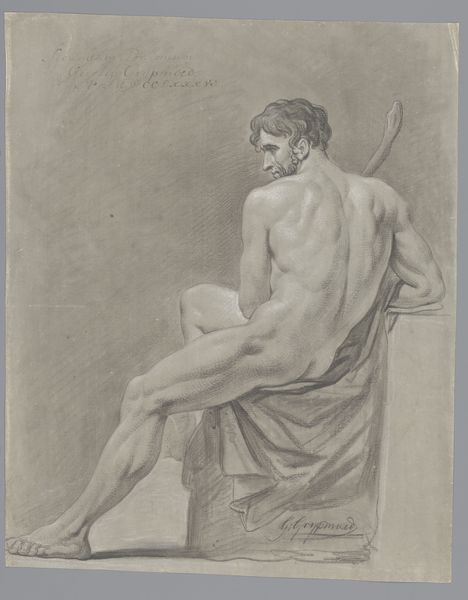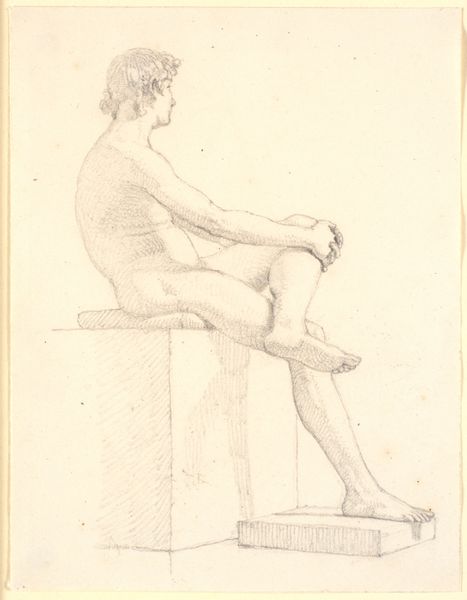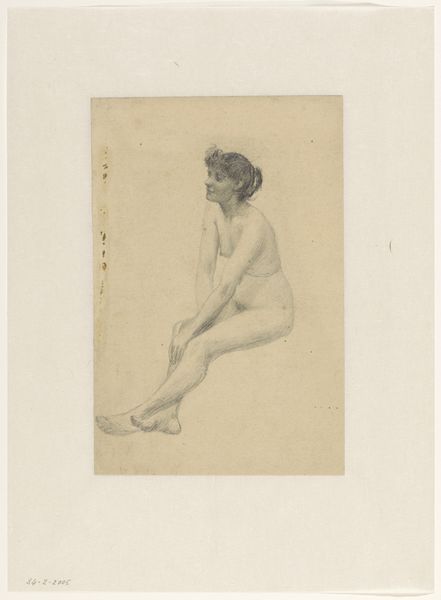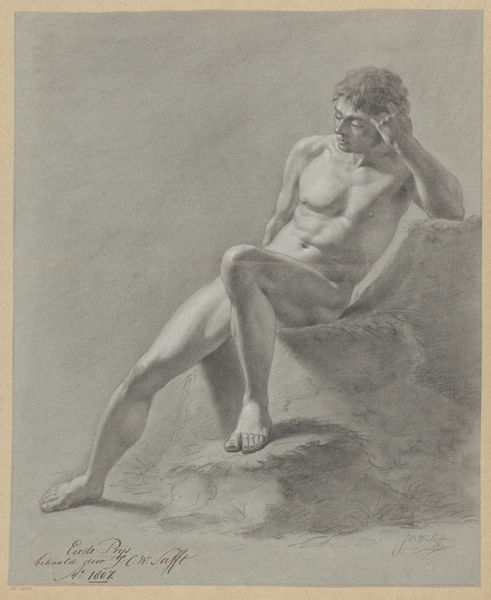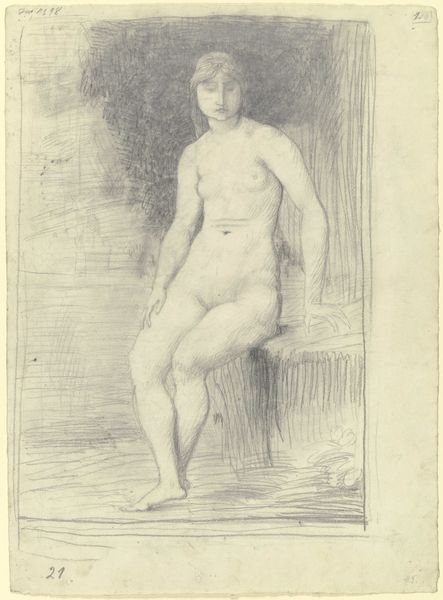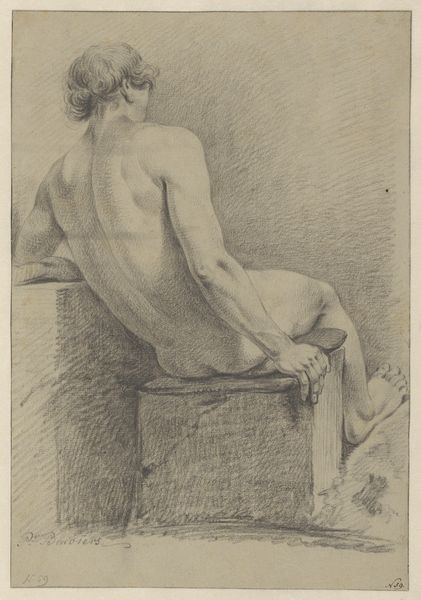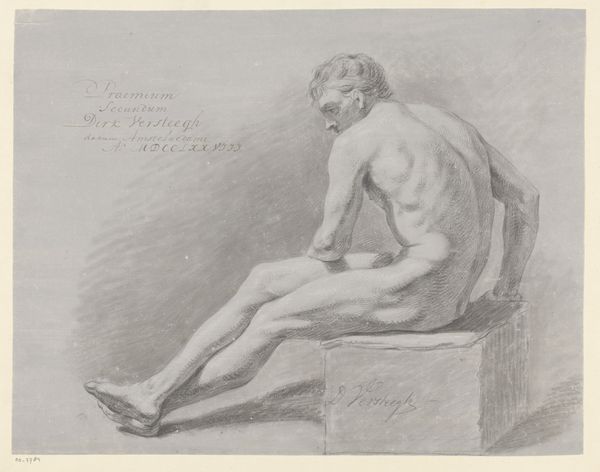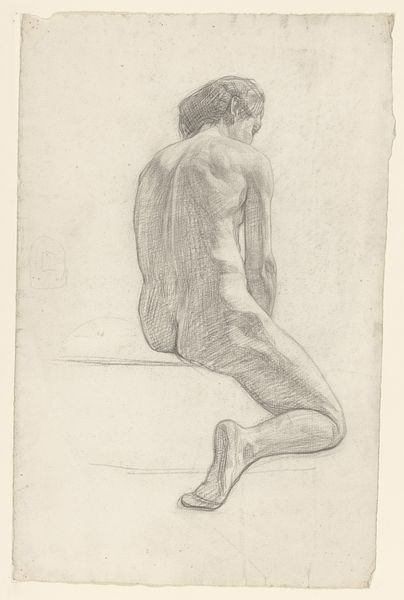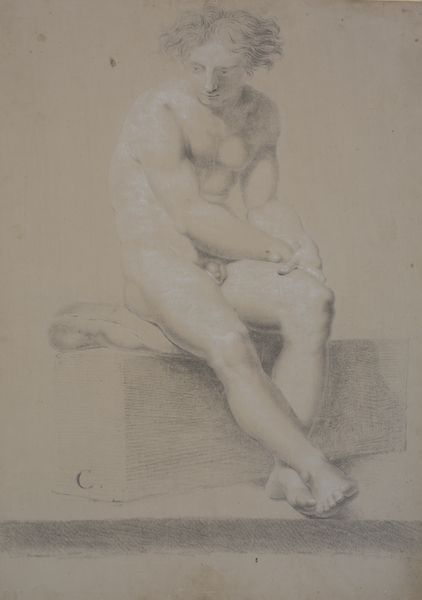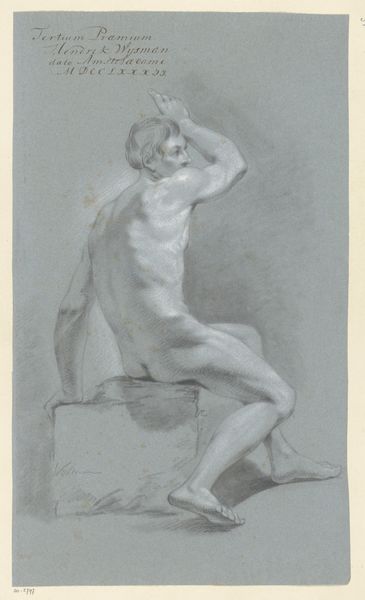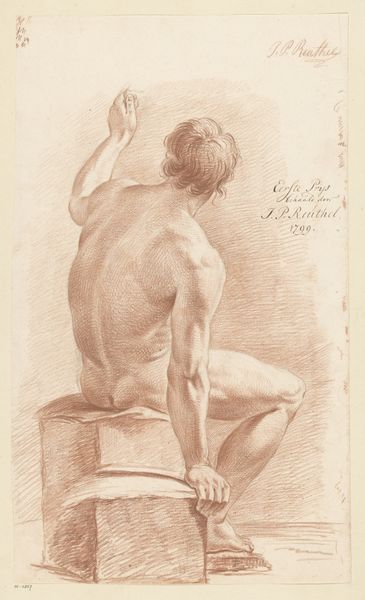
drawing, pencil
#
portrait
#
drawing
#
neoclacissism
#
pencil
#
academic-art
Dimensions: height 428 mm, width 341 mm
Copyright: Rijks Museum: Open Domain
Editor: This is "Zittend mannelijk naakt, van opzij gezien (2e prijs 1775)" – or "Seated Male Nude, Seen from the Side (2nd prize 1775)" by Jean Grandjean, made in 1775. It's a pencil drawing, and it has this sort of austere, classical feel to it. What can you tell us about the way this was made? Curator: Note the paper's texture, probably laid paper produced in a specific mill with its own watermarks dictating size and quality. The pencil itself - what graphite mine did it come from, how was it formed, and what was the role of guilds and trade networks in bringing that pencil to Grandjean's hand? We must also think of who would consume it. Editor: Someone involved in the art world, obviously, but how does considering materiality give us clues about the audience? Curator: Consider that academies judged and awarded drawings like this. The work thus demonstrates very specific labor processes valued and recognized within artistic circles. It wasn't simply self-expression; it was skill acquisition within a hierarchical, competitive structure. Note the smooth hatching and the emphasis on clearly delineating muscles. This all represents time spent and skill achieved, aligning it to cultural context Editor: So, thinking about it less as an individual artist’s vision and more as a product of very specific material and labor conditions? Curator: Precisely. Where does academic study intersect with craftsmanship and artistic value in late 18th century Europe, in relation to these raw materials. Editor: It's fascinating to consider art-making from that angle. It makes you think about the sheer physicality and almost industrial element involved. Curator: Exactly. Approaching it as simply about "inspiration" neglects the labor and consumption tied into the creation process, the class, gender, and geographical dependencies. Hopefully that gives you a bit more food for thought on its creation!
Comments
No comments
Be the first to comment and join the conversation on the ultimate creative platform.
